Imagine stepping into a home that not only anticipates your needs, comfort, and convenience but also cares for the environment and the planet. Welcome to the world of sustainable home automation through a holistic approach to green living – where cutting-edge technology meets eco-conscious living. As our planet faces unprecedented environmental and climate challenges, the concept of green living has evolved from being a trendy buzzword to a crucial lifestyle choice. But, how do we balance our desire for comfort and convenience with our responsibility to the environment and the planet? The answer lies in a holistic approach to sustainable home automation.
“Sustainable home automation” refers to the integration of smart technologies and eco-friendly practices to create living spaces that are both efficient and environmentally responsible. It’s about harnessing the power of innovation to reduce our carbon footprint while enhancing our quality of life. From energy-saving smart thermostats to water-conserving irrigation systems, sustainable home automation encompasses a wide range of solutions designed to minimize resource consumption and maximize eco-efficiency.
In today’s world, the importance of green living cannot be overstated. As climate change accelerates and natural resources dwindle, each of us has a role to play in preserving our planet for future generations. Green living isn’t just about recycling or using energy-efficient light bulbs anymore. It’s a comprehensive approach to life that considers the environmental impact of every decision we make, including how we design and operate our homes.
This is where the holistic approach comes into play. A holistic approach to sustainable home automation considers the entire ecosystem of a home, from its energy consumption to its water usage, from its building materials to its indoor air quality. It’s about creating a seamless integration between technology, design, and sustainable living practices to achieve optimal efficiency and minimal environmental impact.
By embracing sustainable home automation through a holistic lens, we can significantly enhance our green living practices. This approach not only reduces our ecological footprint but also creates healthier, more comfortable living spaces that adapt to our needs while respecting the delicate balance of our planet’s ecosystems. As we delve deeper into this topic, we’ll explore how this innovative fusion of technology and sustainability is shaping the future of home designs and environmental stewardship.
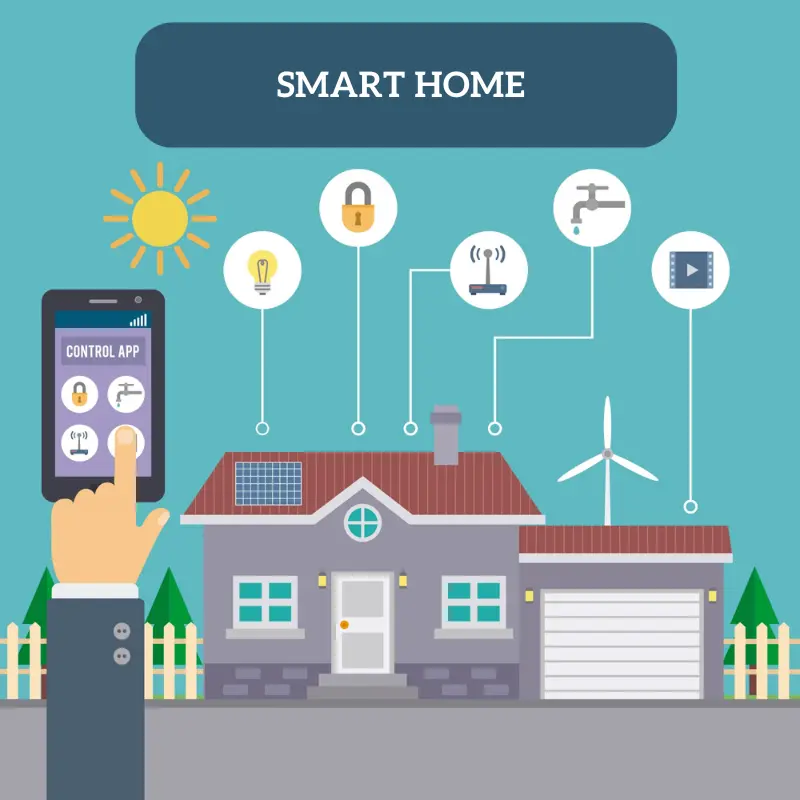
Understanding Sustainable Home Automation
Sustainable home automation is more than just a trendy buzzword; it’s a revolutionary approach to living that combines smart technology with eco-friendly practices. At its core, it’s about creating homes that are not only intelligent but also environmentally responsible.
The key concepts of sustainable home automation revolve around efficiency, conservation, and adaptability. It’s about using technology to optimize our resource usage, reduce waste, and create living spaces that respond to our needs while minimizing environmental impact. This includes everything from smart energy management systems to water-saving devices and automated recycling solutions.
The evolution of home automation technology has been nothing short of remarkable. What started as simple programmable thermostats in the 1970s has blossomed into a vast ecosystem of interconnected devices. Today’s smart homes can learn our habits, anticipate our needs, and make real-time adjustments to conserve resources.
But the real game-changer has been the intersection of sustainability and smart home technology. This fusion has given birth to a new generation of eco-smart devices that go beyond mere convenience. For instance, modern smart thermostats don’t just follow a schedule; they use AI to optimize heating and cooling based on occupancy, weather forecasts, and even the thermal properties of your home.
Similarly, smart lighting systems now incorporate natural light sensors and occupancy detection to minimize unnecessary energy use. Smart water management systems can detect leaks, monitor usage patterns, and even integrate with local weather data to optimize irrigation.
This intersection has also spurred innovation in renewable energy integration. Many smart and energy-efficient home systems can now seamlessly incorporate solar panels, wind turbines, and energy storage solutions, allowing homeowners to generate, store, and intelligently use clean energy.
As we continue to face environmental and climate challenges, the role of eco-smart home automation becomes increasingly crucial. It’s not just about having a cool gadget; it’s about creating homes that are smarter, more efficient, and kinder to our planet. This holistic approach to home automation for green living is paving the way for a more sustainable future, one smart home at a time.
The Holistic Approach to Green Living
When we talk about a holistic approach to green living, we’re looking at the big picture. It’s not just about installing a few eco-friendly gadgets; it’s about reimagining our entire lifestyle with sustainability at its core.
Holistic living is about understanding that everything is interconnected. In the context of our homes, it means recognizing that every decision we make – from the materials we use in construction to how we manage our daily energy use – has an impact on our environment and our well-being. It’s about creating a harmonious balance between our needs, our home systems, and the natural world around us.
The principles of holistic sustainability go beyond just reducing energy consumption. They encompass:
- Resource efficiency: Using what we need, not wasting what we don’t need.
- Circular thinking: Designing out waste and pollution, keeping products and materials in use.
- Biodiversity support: Creating environments that coexist with nature.
- Health and well-being: Ensuring our sustainable choices also promotes a healthy living environment.
- Long-term thinking: Making choices that benefit not just us, but future generations.
Integrating technology with sustainable practices is where the magic happens. It’s about using smart home automation not as an end in itself, but as a tool to enhance our sustainable lifestyle. For instance, a smart home system can help us visualize our resource consumption in real-time, making us more conscious of our usage patterns. It can automate our recycling processes, making it easier to sort and reduce waste. Or it can optimize our home’s energy use based on our daily routines and local renewable energy availability.
But it’s crucial to remember that technology is just one piece of the puzzle. A truly holistic approach also involves making conscious choices about the products we bring into our homes, how we maintain our living spaces, and even how we interact with our local community. It’s about creating a lifestyle where sustainability is not an afterthought but is woven into the very fabric of our daily lives.

Key Components of Sustainable Home Automation
Let’s dive into the heart of sustainable home automation by exploring its key components. These smart-systems work together to create an eco-friendly, efficient living space.
Energy Management Systems
- Smart Thermostats: These clever devices learn your preferences and routines, automatically adjusting your home’s temperature for optimal comfort and energy savings. They can even use weather forecasts to predict heating and cooling needs.
- Automated Lighting Controls: Say goodbye to wasted electricity from forgotten lights. These systems use motion sensors, timers, and even smartphone control to ensure lights are only on when needed. Some can even adjust brightness based on natural light levels.
- Smart Power Strips and Outlets: These unsung heroes combat “vampire” energy drain from devices on standby. They can automatically cut power to inactive devices or be controlled remotely, helping you save energy even when you’re away.
Water Conservation Technologies
- Smart Irrigation Systems: These systems use weather data and soil moisture sensors to water your garden only when necessary. They can adjust watering schedules based on rainfall, saving water and keeping your plants healthy.
- Water Leak Detection Devices: Placed near appliances or in flood-prone areas, these sensors can alert you to leaks before they become major problems, saving water and preventing damage.
- Greywater Recycling Systems: These innovative systems capture water from sinks, showers, and washing machines, treat it, and reuse it for irrigation or toilet flushing, dramatically reducing water waste.
Waste Reduction and Management
- Smart Composting Systems: These high-tech composters can automatically maintain optimal conditions for decomposition, turning your kitchen scraps into rich soil faster and with less effort.
- Automated Recycling Sorters: Using AI and machine vision, these systems can automatically sort your recyclables, making it easier to recycle correctly and reduce landfill waste.
Indoor Air Quality Control
- Smart Air Purifiers: These devices monitor your indoor air quality in real-time, automatically adjusting their operation to remove pollutants, allergens, and even viruses from your home’s air.
- Automated Ventilation Systems: Working in tandem with your HVAC system, these smart ventilators can bring in fresh air when needed while maintaining energy efficiency.
Each of these components plays a crucial role in creating a sustainable, efficient home. By working together, they not only reduce your environmental impact but also create a healthier, more comfortable living space. The beauty of sustainable home automation is that it makes eco-friendly living easier and more intuitive, helping us to be kinder to our planet without sacrificing comfort or convenience.
Integrating Renewable Energy with Home Automation
Taking sustainable home automation to the next level means embracing renewable energy sources. By integrating these clean energy solutions with smart home systems, we can create homes that are not just efficient, but also self-sustaining.
Solar Panel Integration
Solar energy is at the forefront of home renewable solutions. Modern smart homes can seamlessly integrate solar panels with automation systems. These systems can track energy production and consumption in real-time, automatically adjusting your home’s energy usage to maximize the use of solar power. On sunny days, your smart home might run the dishwasher or charge your electric vehicle when solar production is at its peak.
Wind Energy Systems for Homes
While less common than solar, small-scale wind turbines are becoming viable options for homes in windy areas. Smart home systems can monitor wind speeds and adjust energy consumption patterns to make the most of wind-generated power. They can also ensure that excess energy is stored or fed back into the grid efficiently.
Geothermal Heating and Cooling
Geothermal systems use the earth’s constant underground temperature to heat and cool your home. When integrated with smart home technology, these systems can be incredibly efficient. Your smart thermostat can work in tandem with the geothermal system, predicting heating and cooling needs based on weather forecasts and your routines.
Energy Storage Solutions and Smart Grids
Battery storage systems, like Tesla’s Powerwall, are game-changers for renewable energy. They store excess energy produced during peak times for use when renewable sources aren’t generating power. Smart home systems can manage this stored energy, deciding when to use it, when to store it, and even when to sell it back to the grid. This integration with smart grids allows homes to participate in demand response programs, contributing to overall grid stability and potentially earning homeowners money.
The beauty of integrating renewable energy with home automation is that it creates a synergy greater than the sum of its parts. Your home becomes a mini power plant, intelligently producing, consuming, and distributing energy. This not only reduces your carbon footprint but can also lead to significant cost savings and energy independence. It’s a powerful step towards truly smart sustainable living.
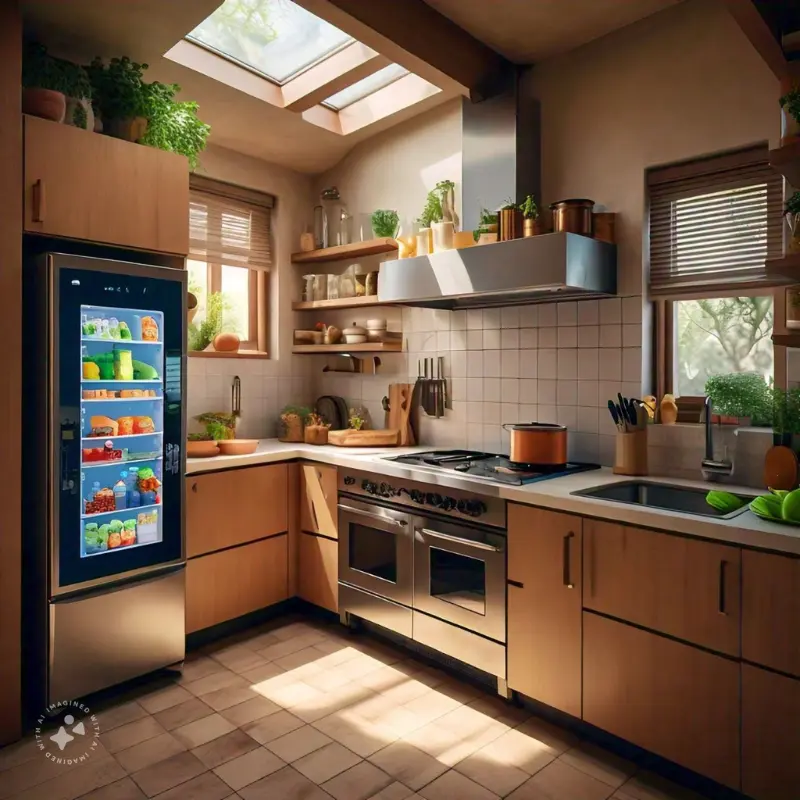
Sustainable Design Principles in Home Automation
When it comes to creating truly sustainable smart homes, it’s not just about the technology we add—it’s also about the fundamental design principles we embrace. Let’s explore how passive designs, eco-friendly materials, and biophilic designs can work hand-in-hand with home automation to create spaces that are both smart and sustainable.
Passive Design Strategies
Passive designs take advantage of the local climate to maintain a comfortable home temperature without relying heavily on mechanical systems. In a smart home, automation can enhance these passive strategies. For instance, smart blinds can automatically adjust based on the sun’s position, working with your home’s thermal mass to regulate temperature. Automated windows can open at night to allow cool air in, then close during hot days to maintain the cooler temperature.
Use of Eco-friendly Materials
Incorporating sustainable materials into your smart home isn’t just about the visible elements—it extends to the technology itself. Look for smart devices made with recycled or biodegradable materials. For example, some companies now offer smart speakers with casings made from ocean-bound plastic. When choosing building materials, opt for sustainable options like bamboo flooring or recycled glass countertops. Eco-friendly smart home systems can help monitor and maintain these materials, extending their lifespan and reducing waste.
Biophilic Designs in Smart Homes
Biophilic designs—which incorporate natural elements into built environments—can be beautifully enhanced by eco-friendly smart home technology. Imagine automated plant watering systems that ensure your indoor garden thrives, or smart skylights that adjust to maximize natural light while preventing heat gain. Some smart home systems can even simulate natural light cycles, supporting your circadian rhythms and overall well-being.
By integrating these sustainable design principles with home automation, we create living spaces that are not only technologically advanced but also inherently eco-friendly. These homes work with nature, not against it, using smart technology to enhance rather than replace natural processes. The result is a home that’s not just smart, but truly intelligent—one that understands and respects its environment while providing optimal comfort for its inhabitants.
The Role of Artificial Intelligence in Green Home Automation
Artificial Intelligence (AI) is revolutionizing the way we approach sustainable home automation, bringing a level of sophistication and efficiency that was once unimaginable. Let’s explore how AI is making our homes smarter and greener.
Machine Learning for Energy Optimization
AI-powered systems can learn from your habits and preferences to optimize energy use. For example, a smart thermostat with machine learning capabilities doesn’t just follow a set schedule – it adapts. It learns when you’re typically home, your preferred temperatures at different times of day, and even how quickly your home heats or cools. Over time, it creates a personalized energy plan that maximizes comfort while minimizing energy waste.
Predictive Maintenance to Reduce Waste
AI can predict when your home systems and appliances need maintenance before they break down. This proactive approach not only saves you from unexpected repairs but also extends the life of your equipment, reducing waste. For instance, an AI system might detect that your HVAC is working harder than usual, suggesting it needs a filter change or tune-up. By keeping your systems running efficiently, you save energy and reduce your carbon footprint.
AI-Driven Decision Making for Resource Management
AI can make complex decisions about resource use in real time. It might decide when to use stored solar energy versus grid power based on current energy prices, weather forecasts, and your typical usage patterns. In water management, AI can adjust your irrigation schedule based on soil moisture levels, recent rainfall, and weather predictions, ensuring your plants get exactly what they need without wasting a drop.
The beauty of AI in sustainable home automation is its ability to handle countless variables simultaneously, making decisions that optimize resource use in ways that would be impossible for humans to manage manually. It’s like having a sustainability and automation expert constantly monitoring and adjusting your home’s systems.
As AI continues to evolve, we can expect even more sophisticated applications in sustainable home automation. From predicting and balancing energy loads across entire neighborhoods to creating virtual power plants from networks of smart homes, AI is paving the way for a more sustainable future.
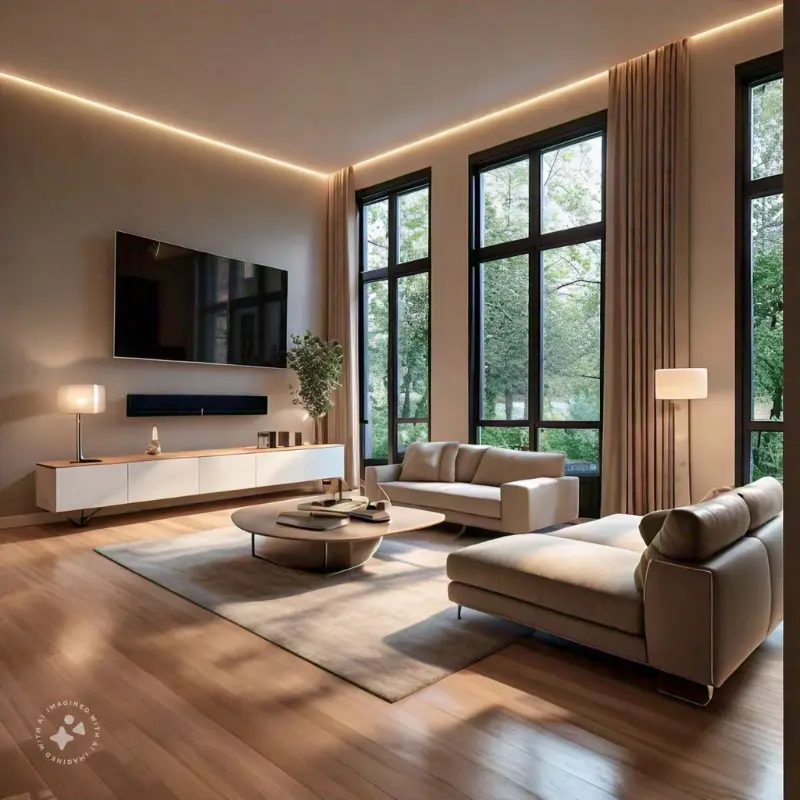
Economic Benefits of Environment-Friendly Home Automation
While the environmental advantages of sustainable home systems are clear, the economic benefits are equally compelling. Let’s explore how investing in smart, eco-friendly home automation and green home technologies can pay off in the long run.
Long-term Cost Savings on Utilities
One of the most immediate and tangible benefits of environment-friendly home automation is the reduction in utility bills. Smart thermostats, for instance, can lead to savings of 10-15% on heating and cooling costs. Automated lighting systems can cut electricity use by up to 60% in some spaces. Water conservation technologies can reduce water bills by 20-30%. Over time, these savings add up significantly. A study by the American Council for an Energy-Efficient Economy (ACEEE) found that smart home technologies can save homeowners an average of $1,100 per year on energy costs alone.
Increased Property Value
Homes equipped with sustainable automation features are becoming increasingly attractive to buyers. According to a study by the National Association of Realtors, 69% of realtors said that promoting energy efficiency in home listings was very or somewhat valuable. Smart home sustainability features can increase a home’s value by 3-5% on average. This means that a $300,000 home could see an increase in value of $9,000 to $15,000 with the right sustainable automation upgrades.
Government Incentives and Rebates
Many governments offer financial incentives for homeowners who invest in energy-efficient and sustainable technologies. In the United States, for example, the federal government offers tax credits for solar panel installations. Many states and local utilities offer rebates for smart thermostats, energy-efficient appliances, and other energy-saving home automation. These incentives can significantly offset the initial costs of implementing sustainable home automation systems or other eco-friendly home technologies.
By combining these economic benefits – reduced utility costs, increased property value, and available incentives – the return on investment for sustainable home automation can be substantial. While the upfront costs may seem daunting, the long-term financial benefits make it a smart economic choice. It’s a win-win situation where you can save money while also contributing to a more sustainable future.
Environmental Impact of Sustainable Home Automation
The environmental benefits of sustainable home automation extend far beyond the walls of our homes. Let’s explore how these smart technologies contribute to a healthier planet.
Reduction in Carbon Footprint
Sustainable home automation plays a crucial role in reducing our carbon emissions. By optimizing energy use, these systems can significantly cut down on electricity consumption. For instance, smart thermostats can reduce heating and cooling energy use by up to 15%. When combined with renewable energy sources like solar panels, the carbon footprint reduction can be even more dramatic. A study by The Carbon Trust found that home automation systems could reduce carbon emissions by up to 20% in a typical home.
Conservation of Natural Resources
Environment-friendly smart home technologies are excellent tools for conserving our planet’s precious resources. Water management systems can reduce water usage by 20-30%, helping to preserve this vital resource. Energy management systems not only save electricity but also reduce the demand for fossil fuels used in power generation. By extending the life of appliances through predictive maintenance, these systems also help reduce the demand for raw materials needed to manufacture new devices.
Promotion of Biodiversity
While it might not be immediately obvious, sustainable home automation can indirectly support biodiversity. Smart irrigation systems prevent overwatering, reducing runoff that can harm local ecosystems. By reducing overall energy consumption, these systems help mitigate climate change, which is a major threat to biodiversity worldwide. Some smart home systems can even be programmed to turn off outdoor lights during bird migration seasons, helping to protect these species.
Moreover, the data collected by smart homes can contribute to larger environmental initiatives. For example, aggregated energy use data can help utilities better manage grid loads, potentially reducing the need for environmentally damaging peaker plants.
By embracing sustainable home automation, we’re not just making our homes more efficient – we’re taking a stand for the environment. These technologies enable us to live comfortably while treading more lightly on our planet, proving that individual actions can indeed make a global difference.
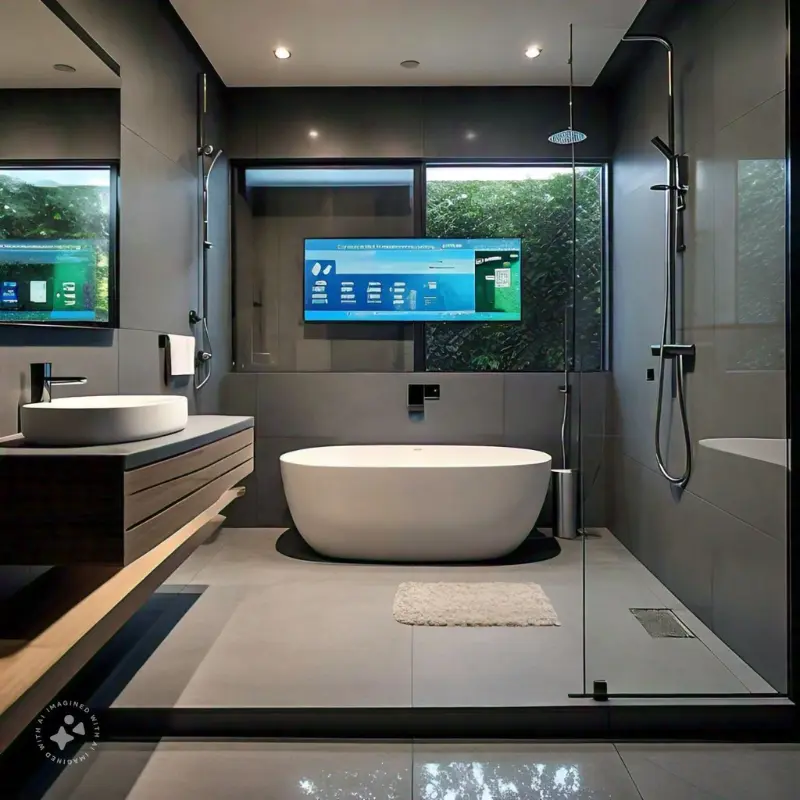
Challenges and Considerations
While sustainable home automation offers numerous benefits, it’s important to address the challenges and considerations that come with implementing these systems.
Initial Costs and Return on Investment
The upfront costs of sustainable home automation can be significant. A comprehensive smart home system can cost anywhere from $2,000 to $20,000 or more, depending on the size of your home and the extent of automation. However, it’s crucial to view this as a long-term investment. While the initial outlay may be high, the energy savings and increased property value can provide a solid return on investment over time. Typically, homeowners can expect to recoup their investment within 5-10 years through energy savings alone.
Technology Obsolescence and E-waste
As with any technology, sustainable home automation systems risk becoming outdated. This raises concerns about e-waste, as outdated devices may need replacement. To mitigate this, look for systems with modular designs that allow for component upgrades rather than full system replacements. Additionally, choose manufacturers with strong sustainability practices and take-back programs for old devices.
Privacy and Security Concerns
Smart homes collect a wealth of data about our daily lives, raising valid privacy concerns. There’s also the risk of cyber attacks on these connected systems. To address these issues, it’s crucial to choose devices with strong encryption and regular security updates. Be diligent about changing default passwords and keeping your home network secure. Consider systems that allow local data processing rather than relying entirely on cloud-based solutions.
Balancing Automation with Manual Control
While automation can greatly enhance efficiency, it’s important to maintain a balance with manual control. Some users may feel frustrated if they can’t override automated systems easily, so they should look for systems that offer intuitive user interfaces and easy manual overrides. This ensures that your home remains comfortable and functional, even if you want to deviate from pre-set routines.
By addressing these challenges head-on, we can maximize the benefits of sustainable home automation while minimizing potential drawbacks. It’s about finding the right balance between technology, sustainability, and personal comfort.
Future Trends in Eco-Friendly Home Automation
As technologies continue to evolve, so does the potential for eco-friendly home automation. Let’s explore some exciting trends that are shaping the future of eco-friendly smart homes.
Internet of Things (IoT) and 5G Integration
The rollout of 5G networks is set to revolutionize the IoT landscape, including sustainable home automation. With faster, more reliable connections, we’ll see an explosion of connected devices working in harmony to optimize our homes’ efficiency. Imagine a network of sensors throughout your home and garden, constantly communicating to fine-tune energy and water usage in real-time. 5G will enable more devices to be connected simultaneously, allowing for more comprehensive and responsive home automation systems.
Advanced Materials and Nanotechnology
The future of sustainable home automation isn’t just about smart devices – it’s also about the materials these devices are made from. Nanotechnology is paving the way for more efficient solar panels, self-cleaning surfaces, and even “smart” windows that can change their tint to optimize heating and cooling. We’re also seeing the development of biodegradable electronics, which could significantly reduce e-waste. These advanced materials will make our smart homes more efficient and more sustainable from the ground up.
Biomimicry in Home Automation Design
Nature has spent billions of years perfecting efficient systems, and the future of home automation is taking notes. Biomimicry – the practice of emulating nature’s time-tested patterns and strategies – is inspiring new approaches to sustainable home designs. For instance, ventilation systems mimicking termite mounds for natural cooling, or solar cells inspired by butterfly wings for more efficient energy capture. We might see eco-friendly smart home automation systems that adapt to environmental changes much like living organisms, creating a more symbiotic relationship between our homes and the natural world.
These trends point to a future where our homes are not just automated, but truly intelligent and integrated with the environment around them. As these technologies mature, we can look forward to homes that are more efficient, more sustainable, and more in tune with the natural world than ever before.
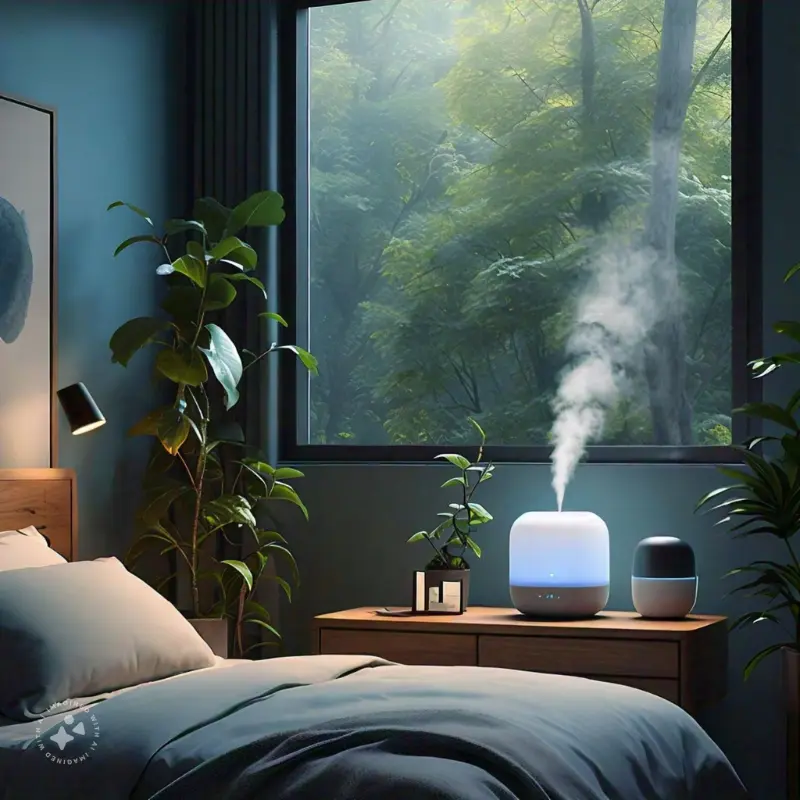
Implementing Eco-Friendly Smart Home Automation: A Step-by-Step Guide
Ready to transform your home into a sustainable, automated oasis? Let’s break down the process into manageable steps.
Assessing Your Home’s Current State
Start by conducting a thorough energy audit of your home. This will help you identify areas of high energy consumption and potential inefficiencies. Look at your utility bills, check for air leaks, assess your insulation, and evaluate the efficiency of your current appliances and systems. Don’t forget to consider water usage and waste management practices too.
Setting Sustainability Goals
Based on your assessment, set clear, measurable goals. These might include reducing energy consumption by a certain percentage, lowering your water usage, or achieving a specific green home certification. Be sure to prioritize goals that align with your values and lifestyle.
Choosing the Right Technologies
Research and select technologies that align with your goals. Consider factors like compatibility with existing systems, scalability, and long-term sustainability. Some options to explore:
- Smart thermostats and HVAC controls
- Automated lighting systems
- Smart power strips and energy monitors
- Water management systems
- Solar panels with smart inverters
- Home energy storage solutions
Phased Implementation Approach
Rather than trying to automate everything at once, consider a phased approach:
- Start with the basics: smart thermostats, lighting controls, and power management.
- Move on to more complex systems like smart appliances and water management.
- Integrate renewable energy sources and storage solutions.
- Finally, tie everything together with a comprehensive home automation system.
Monitoring and Optimizing Performance
Once your systems are in place, it’s crucial to monitor their performance:
- Use the data from your smart devices to track energy and resource usage.
- Regularly review and adjust your automation settings for optimal efficiency.
- Stay informed about software updates and new features for your devices.
- Consider seasonal adjustments to your automation schedules.
Remember, implementing sustainable home automation is a journey, not a destination. Be prepared to learn, adjust, and evolve your system over time. With patience and persistence, you’ll create a home that’s not just smart, but sustainably brilliant.
Case Studies: Successful Sustainable Smart Homes
Let’s explore three real-world examples of how sustainable home automation has transformed living spaces across different settings.
Urban Apartment Transformation
Meet Sarah, a young professional living in a 750 sq ft apartment in Chicago. Her goal was to maximize efficiency in her limited space while reducing her carbon footprint.
Key implementations
- Smart thermostat with zoned heating/cooling
- Automated blinds synced with lighting for optimal natural light use
- Voice-controlled smart plugs for easy management of electronics
- Water-saving smart faucets and showerheads
Results: Sarah reduced her energy consumption by 30% and her water usage by 25% within the first year. Her apartment now feels more spacious and comfortable, with automation handling daily tasks like adjusting temperature and lighting.
Suburban House Retrofit
The Johnson family lives in a 2,500 sq ft home built in the 1990s. They wanted to modernize their home while making it more sustainable.
Key implementations
- Comprehensive smart home system integrating energy, security, and entertainment
- Solar panel installation with smart inverter and battery storage
- Smart irrigation system for their large garden
- Energy-efficient appliances with smart features
Results: The Johnsons cut their grid energy dependence by 70% and reduced water consumption for landscaping by 40%. Their home’s value increased by 4.5%, and they’re saving an average of $2,200 annually on utility bills.
New Construction with Integrated Green Home Automation
The Greenfield Eco-Community is a new development of 50 homes built with sustainability at its core.
Key implementations
- Passive solar design with smart windows and automated shading
- Geothermal heating and cooling systems managed by AI
- Community-wide smart grid for optimal energy distribution
- Greywater recycling system with smart monitoring
- Modular design that allows for easy technology upgrades
Results: Homes in the Greenfield Eco-Community use 80% less energy than traditional homes of similar size. The community has achieved net-zero status, producing as much energy as it consumes over the year. Residents report high satisfaction with their low-maintenance, high-comfort homes.
These case studies demonstrate that sustainable home automation can be successfully implemented in various settings, from small urban apartments to entire communities. The key is tailoring the solutions to the specific needs and constraints of each living space while keeping sustainability as the guiding principle.
The Wider Impact: Community and Global Perspectives
As we zoom out from individual homes, we begin to see the broader implications of sustainable home automation on our communities and the world at large.
Smart Neighborhoods and Cities
Sustainable home automation is becoming a cornerstone of smart city initiatives worldwide. In places like Songdo, South Korea, and Masdar City in the UAE, we’re seeing entire neighborhoods built around smart, sustainable principles. These smart neighborhoods feature:
- Integrated energy grids that balance supply and demand in real-time
- Community-wide water management systems
- Smart waste management with automated sorting and collection
- Shared electric vehicle charging infrastructure
The result is a more efficient, livable urban environment that significantly reduces resource consumption and improves the quality of life for residents.
Collective Environmental Impact
When sustainable home automation scales up to entire communities, the environmental benefits multiply exponentially. For instance:
- A study in Amsterdam showed that a neighborhood-wide smart grid system reduced peak energy demand by 34%
- In Toronto, a smart water management system implemented across several districts cut water usage by 15% city-wide
- Barcelona’s smart city initiatives, including home and green building automation, have led to a 30% reduction in the city’s overall carbon emissions
These collective efforts contribute significantly to combating climate change and conserving natural resources on a global scale.
Influencing Policy and Industry Standards
The success of sustainable home automation is driving changes in policy and industry standards:
- Many cities are now requiring smart, sustainable features in new construction
- Energy companies are adapting their business models to accommodate decentralized, smart energy systems
- Governments are offering more incentives for homeowners and developers to implement eco-friendly smart home automation
- Industry associations are developing new standards for interoperability and sustainability in smart home technologies
These shifts are accelerating the adoption of sustainable practices and pushing innovation in the field of home automation.
By embracing environment-friendly home automation, we’re not just improving our individual living spaces – we’re contributing to a global movement towards smarter, more sustainable communities. As these technologies become more widespread, they have the potential to reshape our cities, our energy systems, and our relationship with the environment.

Conclusion
As we wrap up our exploration of sustainable home automation, let’s reflect on the transformative power of this holistic approach to green living.
A Quick Recap – Holistic Approach to Sustainable Home Automation
We’ve seen how sustainable home automation goes beyond just installing a few smart devices. It’s about creating an integrated ecosystem where technology, design, and sustainable practices work in harmony. From energy management and water conservation to waste reduction and air quality control, every aspect of home life can be optimized for sustainability. By incorporating renewable energy, embracing sustainable design principles, and leveraging artificial intelligence, we can create homes that are not only comfortable and convenient but also kind to our planet.
The Transformative Potential For Green Living
The potential of sustainable home automation to revolutionize our way of living is truly exciting. It empowers us to significantly reduce our carbon footprint without sacrificing comfort or convenience. In fact, it often enhances our quality of life while saving us money in the long run. As these technologies become more widespread, they have the power to transform not just individual homes, but entire communities and cities, contributing to a more sustainable future for all.
Steps readers can take to start their Sustainable Home Automation journey
- Start small: Begin with simple, high-impact changes like installing a smart thermostat or smart power strips.
- Conduct an energy audit: Understand your current energy usage to identify areas for improvement.
- Set achievable goals: Define what sustainability means for your home and set realistic targets.
- Research and plan: Explore different technologies and create a phased implementation plan.
- Seek professional advice: Consult with sustainable residential automation experts to tailor solutions to your specific needs.
- Stay informed: Keep up with the latest developments in sustainable home technologies.
- Share your experience: Inspire others by sharing your eco-conscious home automation journey.
Remember, every step towards sustainable home automation, no matter how small, is a step towards a greener future. By embracing these technologies and practices, we’re not just creating smarter homes – we’re building a smarter, more sustainable world. So, why wait? Start your sustainable home automation journey today and be a part of the solution for a better tomorrow.
Frequently Asked Questions
Q.1 – How does sustainable home automation impact home insurance rates?
Many insurance companies offer discounts for homes with smart security and safety features, which are often part of sustainable home automation systems. These discounts can range from 5% to 20% off premiums, as automated eco homes are considered lower risk for theft, fire, and water damage.
Q.2 – Can sustainable home automation be implemented in rental properties?
Yes, renters can implement many aspects of sustainable home automation using portable or non-permanent solutions. Options include smart plugs, portable smart speakers with voice control, wireless sensors, and app-controlled LED bulbs that can be easily installed and removed without altering the property.
Q.3 – How does sustainable home automation handle power outages?
Many sustainable home automation systems include backup power solutions like home batteries, which can keep essential systems running during outages. Some systems also have offline modes that allow basic functionality without internet connectivity, ensuring your home remains operational during disruptions.
Q.4 – Are there any health benefits associated with clean tech home automation?
Yes, clean tech home automation can offer health benefits through improved indoor air quality, optimized lighting that supports natural circadian rhythms, and reduced exposure to harmful chemicals. Smart systems can monitor and adjust environmental factors to create healthier living spaces.
Q.5 – How does sustainable home automation impact pets and plants?
Sustainable home automation can benefit pets and plants through features like automated pet feeders, smart plant watering systems, and climate control that maintains optimal conditions. Some systems even include pet and plant monitoring capabilities to ensure their well-being when you’re away.
Also read – What Is Home Automation and How Does It Work?
Additional Resources
Further Reading
Books and Journals
- Book: “IoT and Smart Devices for Sustainable Environment” by Azeem Irshad, Mourade Azrour, and Rajasekhar Chaganti
- Book: “Fundamentals of Innovative Sustainable Homes Design and Construction” by Avi Friedman
- Journal: “An IoT-based Home Automation Integrated Approach” by The Science and Information (SAI) Organization
Discussions and Forums
- r/smarthome on Reddit
- r/homeautomation on Reddit
Professional Services
Relevant Links
I’d love to hear from you! Have you implemented any sustainable home automation features in your living space? Whether it’s a small smart device or a complete eco-friendly home automation system, what has been your experience? Share your successes, challenges, or any tips you’ve discovered along the way. What aspect of green home automation intrigues you the most? Your insights could be incredibly valuable to others who are just starting their journey towards a smarter, greener home!
*Images used in this blog post article are for illustrative purposes only. We do not possess any copyrights to these images unless explicitly mentioned.

Nikhil Shukla
About The Author
Nikhil, with a background in Technology, is deeply passionate about Interior Design and Home Décor. At Cherry Hills Home Living, he channels this passion into creating inviting and stylish living spaces. With a unique blend of analytical thinking and creative flair, Nikhil offers innovative ideas, practical tips, and inspiring guidance to help others transform their homes into cozy retreats.